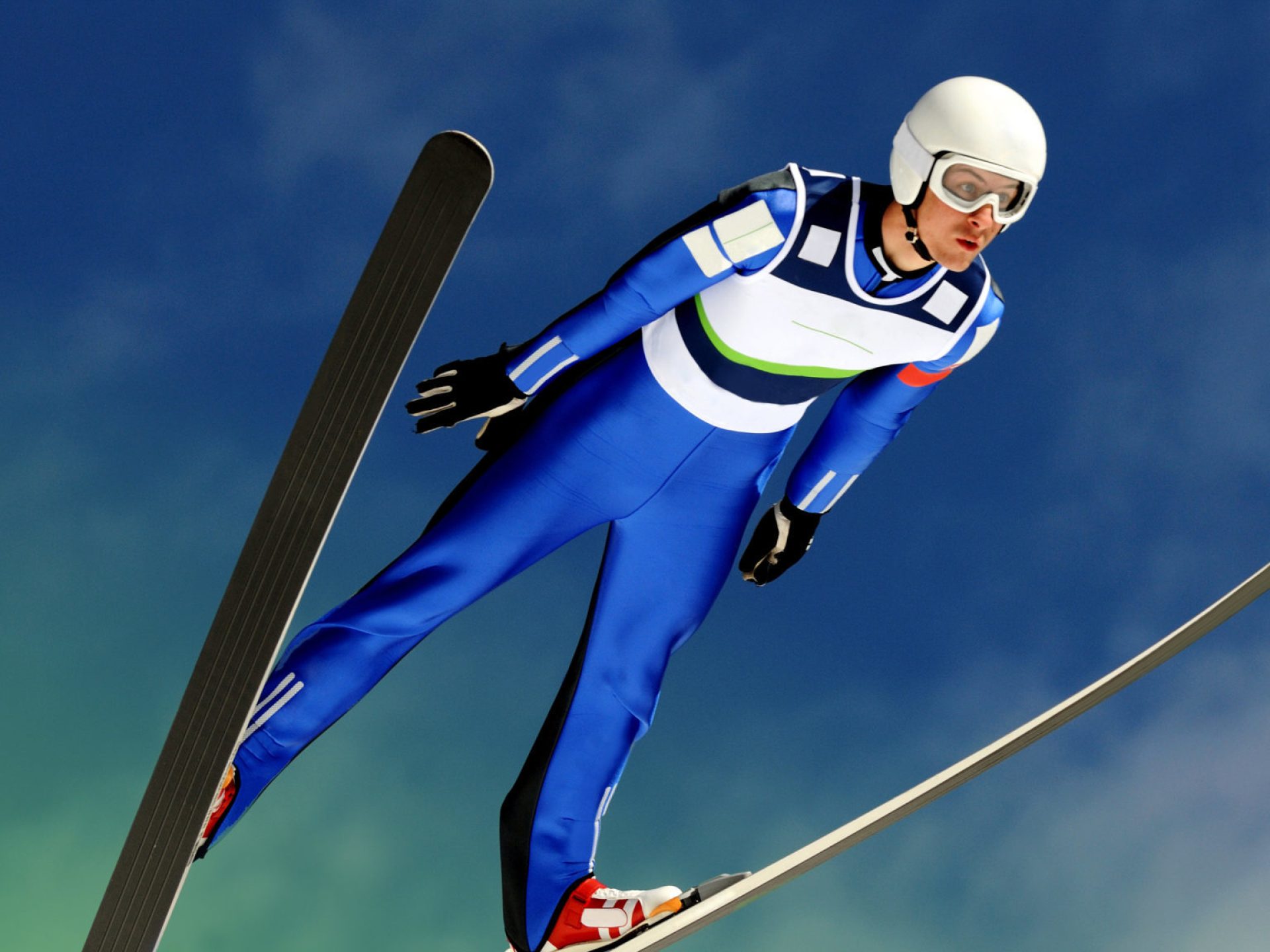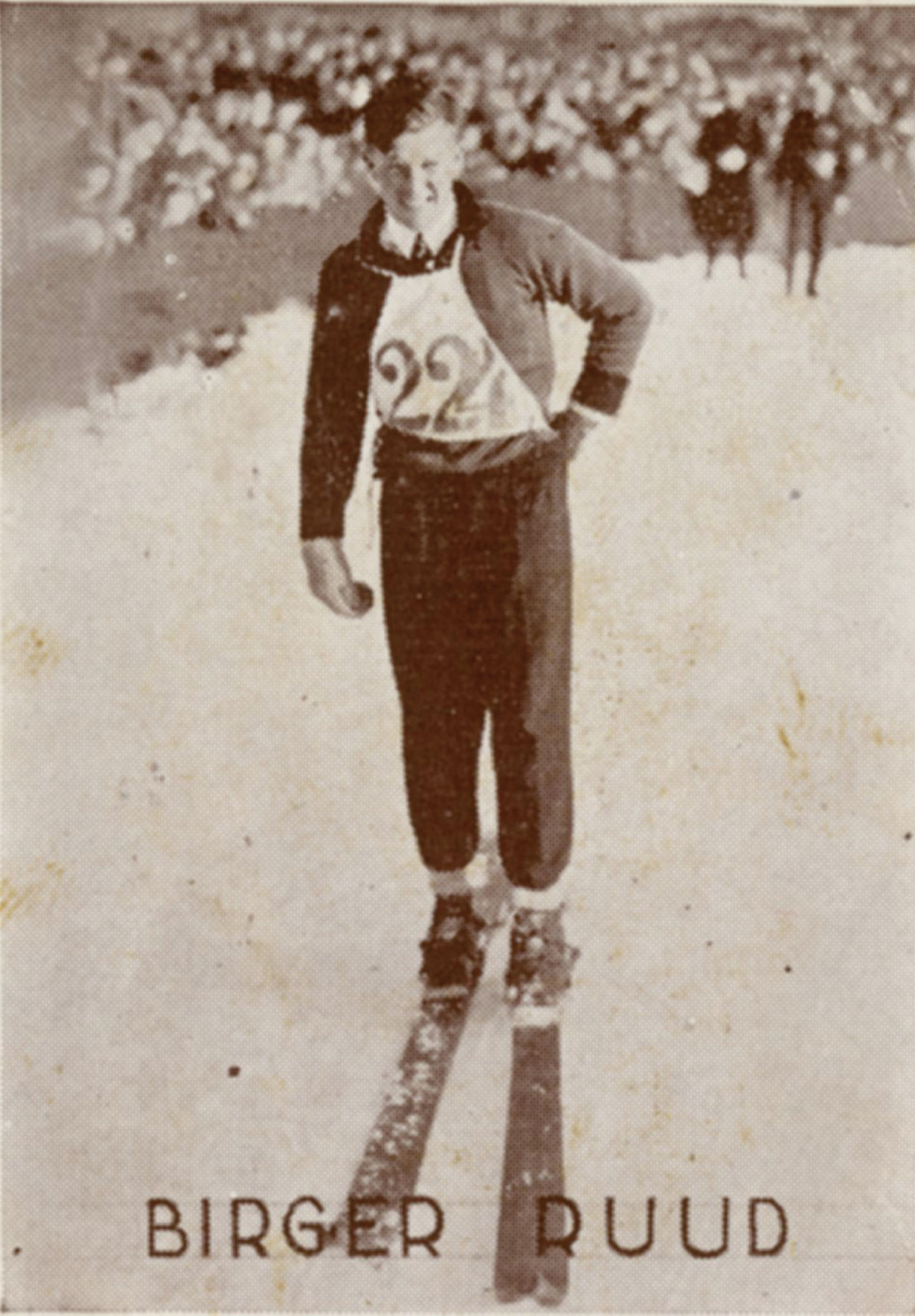October 29, 2019
Into the Abyss: Ski Jumping’s Most Colourful Characters

This article was originally published in Populous Magazine, our biannual publication featuring news and trends from the worlds of sport, entertainment, and major public events. Find out more, and sign up to receive a free copy, here.
The brains of ski jumpers are wired differently. “You have to have something loose up here,” said American jumper Kevin Bickner ahead of his appearance at the 2018 Winter Olympics, putting his finger to his temple. And he has a point.
This is a sport that requires participants to hurtle down a vertigo-inducing 35-degree ramp at 60mph (100kph), propel themselves unflinchingly into the abyss, and then touch down gracefully on an icy slope – all without killing themselves. Perhaps that is why ski jumping has attracted some of the most colourful characters in winter sports.
One of the early pioneers was Norwegian Birger Ruud who helped develop the now-standard Kongsberger Technique, where jumpers bend forward at the hips during flight, with their arms extended in a V shape and their skis parallel. Using this method, Ruud stormed to victory at the 1932 and 1936 Olympics, before World War II looked to have cut his career short.
Not the kind of character to be easily cowed, he became a member of the Norwegian resistance, was locked up by the Germans in 1943, but survived the war and came out of retirement to win an unlikely silver medal at the 1948 Games. Ski jumpers are made from sterner stuff.

The sport reached the height of its popularity at the 1988 Calgary Winter Olympics, when two of its most famous figures, Finland’s Matti Nykänen and Britain’s Eddie “The Eagle” Edwards came face to face.
The former, known as the Flying Finn, is regarded by many as the greatest ski jumper who ever flew. As well as being immensely talented, with a knack for timing his take-offs to perfection, he possessed an ideal physique for the sport. Aerodynamics favours taller and lighter ski jumpers since the larger surface area of their bodies creates added lift. At 177cms (5ft 9ins), Nykänen was not particularly tall, but he weighed just 54kg (119lbs) and was unusually broad across the shoulders. When the Flying Finn took to the air, he soared like a glider, seeming to hang there longer than anyone else.
At the 1984 Olympics he took silver medal on the normal hill, followed by a colossal 17.5 point victory on the largest hill, which remains the largest winning margin in the history of the sport. He arrived at Calgary as the clear favourite.
Edwards, on the other hand, was a plasterer by trade and a dreamer. Desperate to represent his country at the Olympics, he had self-funded his training while sleeping in a disused Finnish psychiatric hospital, borrowing old bits of kit and breaking teeth and bones along the way. He was incredibly long-sighted, wearing thick, round spectacles that would often steam up when he jumped. He qualified for the 1988 Olympics because he was the only British ski jumper. And he was a long way off the pace.
Nykänen obliterated the field, winning an unprecedented two gold medals on the normal and large hills, while Edwards finished last. Despite this, the plucky Brit became an overnight sensation. With his irrepressible spirit and unbounded bravery, he had captured the hearts of spectators the world over.
He went on to appear in television adverts, released a book, and recorded a single in Finnish that reached number two in the Finnish charts. He never jumped at another Olympics, but reinvented himself as a ski instructor, climbed to world number nine in amateur speed skating and in 2003 graduated with a degree in law. Today he enjoys national treasure status in Britain. Hollywood made a film about his life starring Taron Egerton and Hugh Jackman.
As a sportsman, Eddie Edwards may not have soared towards the sun, but neither did he fall, Icarus-like, reaching too far for his dream. Sadly, it was a different story for Matti Nykänen, as from the highs of Calgary, the Finn’s career plummeted.
He retired just three years later after a disastrous performance at the world championships that saw him finish 50th. And, like many ex-athletes, he struggled to fill the void left in his life.
"Consider yourself lucky your name isn’t Matti Nykänen."
Like Edwards, Nykänen too enjoyed some success as a pop star, selling 25,000 copies of his debut album in Finland. But when his second album flopped, he was left bankrupt and forced to make another change of tack. He sold his gold medals and, for a time, took to the adult entertainment industry, before making another botched attempt at becoming a pop star with an album titled “Maybe I Had a Drink, Maybe I Didn’t”.
There was also a dark side to Nykänen: he served several years in prison for crimes that included assaulting an ex-partner and stabbing in the back a friend who beat him in a finger-wrestling competition. A few weeks before his sudden death in February 2019, at the age of 55, while singing at a concert, he told his crowd: “Consider yourself lucky your name isn’t Matti Nykänen.”
By the end of his life, a new generation of Finns knew Nykänen better for the ignominy and scandal that followed him around than for his heroic exploits on a ski jumping hill. But for those who saw him fly, he would always remain a legend.
Lorem ipsum dolor sit amet consectetur, adipisicing elit. Non facere corporis et expedita sit nam amet aut necessitatibus at dolore enim quis impedit eius libero, harum tempore laboriosam dolor cumque.
Lorem, ipsum dolor sit amet consectetur adipisicing elit. Illo temporibus vero veritatis eveniet, placeat dolorem sunt at provident tenetur omnis, dicta exercitationem. Expedita quod aspernatur molestias eum? Totam, incidunt quos.